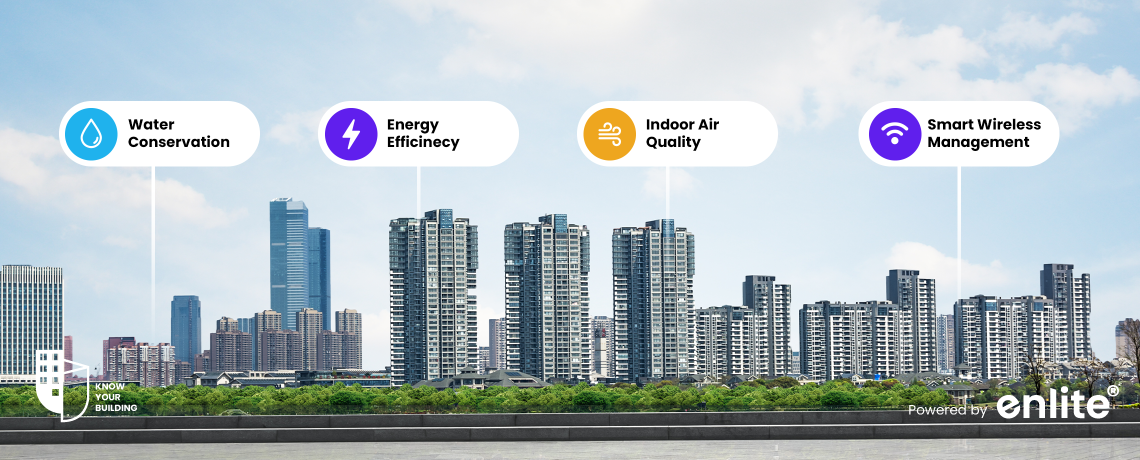Table of Contents
ToggleAs the real estate industry shifts toward sustainability, smart building design is becoming the cornerstone of efficient, eco-friendly construction and facility management. With the global focus on reducing carbon emissions and minimizing environmental impact, developers and facility managers are increasingly incorporating smart technologies into their buildings.
In this blog, we’ll explore some top tips for sustainable construction and facility management, backed by industry data and insights that highlight the importance of smart building design in today’s world.
The Push for Sustainable Buildings
The real estate industry has a significant impact on the environment. According to the World Green Building Council, buildings are responsible for approximately 39% of global carbon emissions, with 28% coming from operational emissions (energy to heat, cool, and power buildings), and 11% from embodied carbon (materials and construction processes). As regulations tighten and corporate responsibility grows, adopting sustainable practices in building design and facility management is essential to meet carbon reduction goals.
Top Tips for Sustainable Construction and Facility Management
1. Energy Efficiency through Smart HVAC Systems
-
-
HVAC systems account for 40-60% of a building’s total energy consumption. Smart HVAC systems, integrated with a Building Management System (BMS), can optimize heating, cooling, and ventilation based on occupancy and environmental conditions. By using real-time data, these systems can significantly reduce energy waste and enhance overall comfort.
-
-
-
Insight: Buildings with smart HVAC systems can achieve up to 30% energy savings, according to the U.S. Department of Energy.
-
2. Utilize Renewable Energy Sources
-
-
Integrating renewable energy sources like solar panels and wind turbines into building design is a key step toward reducing operational emissions. Smart buildings can incorporate energy storage systems and grid optimization tools that allow them to efficiently use renewable energy when it’s available, reducing reliance on fossil fuels.
-
-
-
Fact: In 2023, renewable energy sources like wind and solar accounted for more than 20% of the global electricity supply, with the figure expected to rise in the coming decade.
-
3. Water Management and Conservation
-
-
Water conservation is another critical component of sustainable building design. Smart water monitoring systems integrated with BMS can detect leaks, optimize water usage, and reduce waste. For instance, using sensor-based irrigation systems or rainwater harvesting technologies can significantly lower water consumption.
-
-
-
Data Insight: Studies show that buildings with advanced water management systems can reduce water use by 20-30% annually.
-
4. Green Building Materials
-
-
Sustainable construction begins with the materials used. Opt for low-carbon or recycled building materials such as bamboo, recycled steel, or reclaimed wood. These materials help reduce the embodied carbon footprint of the building. Additionally, ensure that insulation and windows are optimized for energy conservation to reduce heating and cooling loads.
-
-
-
Fact: According to the Carbon Leadership Forum, 11% of global emissions come from embodied carbon, largely from the construction sector.
-
5. Advanced Lighting Systems
-
-
Lighting accounts for 10-15% of a building’s energy consumption. Smart lighting solutions, such as LED systems combined with occupancy sensors and daylight integration, can adjust lighting levels based on real-time data, reducing unnecessary usage. Implementing energy-efficient lighting not only cuts energy costs but also reduces strain on the environment.
-
-
-
Insight: Smart lighting systems can reduce lighting energy consumption by 50-75%, according to the U.S. Energy Information Administration.
-
6. Implement a Cloud-Native Building Management System (BMS)
-
-
A cloud-native BMS provides real-time insights into various building operations, from energy usage to air quality. This system can integrate HVAC, lighting, security, and water management, enabling facility managers to monitor and control all aspects of the building efficiently. By leveraging the power of cloud technology, facilities can optimize performance remotely and make data-driven decisions to enhance sustainability.
-
-
-
Data Insight: A study by MarketsandMarkets forecasts that the global BMS market will grow to $19.25 billion by 2025, driven by increasing demand for energy-efficient and smart building solutions.
-
7. Focus on Occupant Health and Well-being
-
-
Sustainable building design isn’t just about the environment; it’s also about creating healthy, productive environments for occupants. Smart buildings can incorporate air quality sensors, natural ventilation systems, and biophilic design elements (such as plants and natural lighting) to improve indoor air quality and overall well-being.
-
-
-
Fact: Research shows that good indoor air quality can improve worker productivity by 8-11% and reduce absenteeism in offices and hospitals by 35-50%.
-
Why Smart Buildings Matter in the Real Estate Industry
Smart buildings are not just a trend—they are the future of the real estate industry. As sustainability becomes a key factor in property valuation and regulatory compliance, real estate professionals need to adopt technologies that help reduce carbon emissions, optimize resources, and enhance building performance.
Moreover, the demand for smart buildings is growing. According to a survey by Deloitte, 50% of corporate real estate executives believe that sustainability will become one of the most important criteria for their future building projects.
Sustainable construction and facility management are no longer optional—they are essential. By leveraging smart building technologies such as energy-efficient HVAC systems, renewable energy, smart lighting, and advanced water management, developers and facility managers can significantly reduce a building’s carbon footprint while ensuring the safety, comfort, and well-being of occupants.
Enhance your facility’s sustainability with “Know Your Building”—the world’s first cloud-native wireless Building Management System.














